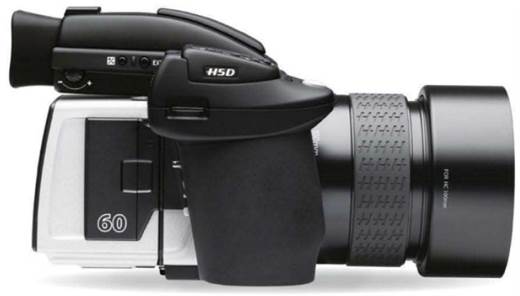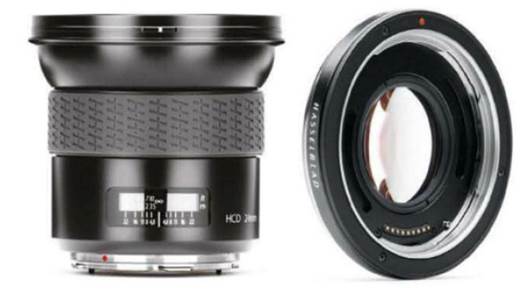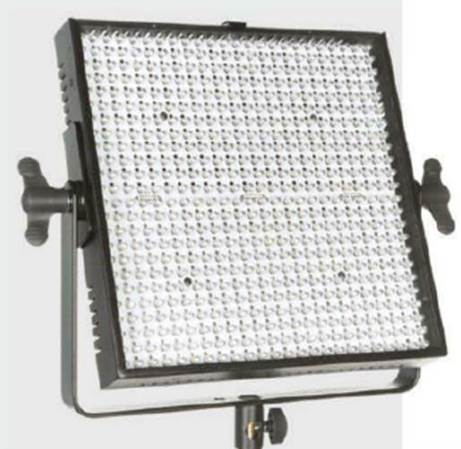Hasselblad has upped the ante in digital
medium format with the introduction of its latest generation of D-SLRs. The H5D
series of models available in 40, 50 or 60 megapixels resolutions (plus two
models for multi-shot capture at 50 or 200 megapixels) incorporate an upgraded
version of Hasselblad’s innovative ‘True Focus’ autofocusing system. They also
boast the most extensive set of revisions and improvements, both internally and
externally, since Hasselblad launched the original H1D.

Hasselblad
H5D
The ‘True Focus II’ employs a system of
position detectors and accelerometers which precisely measure the camera’s
orientation and then use this information to adjust the focusing in relation to
the first subject distance measurement. Importantly, True Focus will allow for
the autofocus to be adjusted to any area of the frame, giving it superiority
over even the widest-area multi-point systems. The system’s ‘Absolute Position
Lock’ processor logs the camera’s position during any recomposing and then
applies complex algorithms to perform the required focus corrections at such a
rapid speed that no shutter lag occurs. A new feature called ‘Immediate Focus
Confirm’ enabling easier checking of image sharpness – using a focus peaking
display - in the monitor screen.
The H5D models feature a revised and
restyled bodyshell which boasts upgraded weather-proofing and improved
ergonomics to allow for more efficient operational sequences. These include
bigger buttons and more logical selection and setting procedures. Camera
set-ups can be customized and saved as profiles for immediate recall (which can
also be exported to other H5D cameras).
The capture devise feature new image
processors which now allow for ‘print ready’ JPEG capture at one-quarter
resolution, in addition to Hasselblad’s lossless compressed 3FR RAW files (i.e.
RAW+JPEG capture). The new H5D-60 uses a CCD sensor with an imaging area of
40.2x53.7 mm. It has a sensitively range equivalent to ISO 50 to 800, and
continuous shooting is possible at up to one frame every 1.4 seconds. The
in-camera file size is around 80 MB (Hasselblad 3F RAW) and images are stored
internally on a CompactFlash memory card. The H5D-50 has a 49.1x36.7mm sensor
with a resolution of 50.1 megapixels, while the H5D-40;s imager is 43.8x32.9 mm
with a resolution of 40 megapixels. Both these models allow for continuous
shooting at close to one frame per second.
Wider and closer with new Hasselblad Accessories
Announced with the H5D series is a new
HCD-series ultra-wide lens, bringing the number of H-system lenses to 12 (plus
a teleconverter and a macro converter which is also new). The new 24mm f4.8 HCD
lens gives an angle-of view of 104 degrees on a 37x49 mm sensor and is
equivalent to a 17.8 mm in the 35mm format.
The optical construction comprises 14
elements in 11 groups with a rear focusing group. The minimum focusing distance
is 38 cm and the minimum aperture is f32. Weighing in at 810 grams, the
Hasselblad HCD 24mm f4.8 accepts 95 mm diameter filters and is 99 mm in length.
It’s also designed as a companion to the HTS 1.5x Tilt/Shift adapter, providing
a 37mm (24mm equivalent in 35mm) wide-angle tilt-and-shift lens.
Also new is a Macro Converter which is
designed to provide excellent close-up performance with the HC 50mm, HCD 28mm
and HC 35mm lenses avoiding the need for the purchase of a specialized macro
lens for anybody who only occasionally need close-up focusing capabilities.

Wider
and closer with new Hasselblad Accessories
Bowens Creo –Cool Under Pressure
Bowens Creo flash power packs the
highlights
·
Ultra-fast recycling times. Just 0.5 seconds at
full power
·
As many as eight flashes per second
·
Flash durations as short as 1/5000 second
·
Ten stops power output range (nine for the Creo
1200)
·
Asymmetrical power distribution
·
1000 flashes per hour shooting capacity
·
Advanced cooling system using multiple fans high
colour temperature stability; +/-40 Kelvin from 4.0 – 10.0
·
Energy stability of +/- 1/50 f-stop (flash-to-flash)
·
Radio-enabled for wire-free sync with Bowens
Pulsar Radio Trigger
·
Self-seeking multi-voltage for world-wide
compatibility
·
Easy-to-read LED power displays
·
Compatible with Quad system flash heads and
Bowens ‘S’-Type Accessories.
The latest-generation flash power packs
from Bowens deliver rapid recycling and ultra-short flash durations with a high
level of colour temperature stability. This is achieved via advanced cooling
and internal protention systems which prevent temperature build-ups during
log-sequence shooting, ensuring the packs always operate at optimum
performance.
The Bowens Creo flash packs also introduce
contemporary styling with the convenience of a membrane-type control panel and
LED digital displays. There are models in the current line-up; the Creo 1200
and the Creo 2400 which deliver a maximum flash power of 1200 and 2400 joules
respectively. Both models have two flash head outlets with asymmetric power
distribution. The Creo 1200 has a nine-stop power output range for each outlet
while the Creo 2400’s range is a handy ten stops. These are adjustable in
either one-tech of cap city full-stop increments. The flash duration at the
minimum power setting is 1/5000 second on both models and recycle times to full
power are 0.5 seconds for the Creo 1200 and 0.9 seconds for the Creo 2400. Both
models can fire off sequences of up to eight flashes per second and have the to
deliver up to 1000 flashes per hour thanks to the new cooling system which
employs multiple fans.
Colour temperature stability is quoted at
no more than +/-80 degrees Kelvin across the power ranges and flash to flash
stability of +/-40 degrees Kelvin.
The Bowens Creo packs have automatic voltage
sensing so they can be used anywhere in the world. They are equipped with a
‘Radio Trigger Card’ slot enabling the ‘Pulsar Radio Rx Card’ to be used for
wireless triggering and control with Bowen’s Pulsar radio trigger.
Alternatively, the optional Creo Infra-Red remote control is available. Bowens
has also introduced a new Creo-series flash head which is more compact and
lighter than the Quad heads although these are still compatible with the new
packs. The Creo head has built-in cooling and a protection system to maintain
colour temperature stability, the Creo head is compatible with Bowens Quad
packs and the new Creo packs are fully compatible with the Bowen ‘S-type’
accessories.

Bowens
Creo –Cool Under Pressure
Limelite – Looking After Your Video Image
Backed by the expertise and long experience
of Bowens, Limelite is the UK’s freshest designer and manufacturer of
professional video and broadcast lighting and accessories. These products are
now available in Australia, exclusively distributed by C.R. Kennydy &
Company.
Limelite Comodo Camera Support System
The Limelite Comodo Go is the core of the
Comodo Camera Support Rig system. Built to last, the dual-rail system and
mounting brackets are constructed from heavy-duty but lightweight aluminium and
carbon heavy-duty but lightweight aluminium and carbon fibre. Consequently,
these components are rugged and ready for use in tough conditions. Importantly,
the Comodo Camera Support Rig System is modular so components can be quickly
added or removed according to the shooting requirements. This modularity makes
it possible to create three variations of Comodo rig – Go, Evo and Pro.
The Comodo system includes all the
components needed to assist with shooting video at professional standards with
a D-SLR, including the Comodo Follow Focus, LCD monitor attachment accessories
and large comfort grip handles.
Whether you’re just starting out or a seasoned
videographer, the Comodo Camera Support system is the cost-effective
professional solution you need.
The Limelite Comodo Evo with its offset
shoulder pad is bridge between the Comodo Go and Pro. The Limelite Comodo Pro
is the complete package for professionals shooting with video cameras or HDV
D-SLRs and allows for the fitting of matte box as well as the other Comodo
system accessories.

Limelite
Comodo Camera Support System
Limelite Mosaic Modular Light Bank
System
The Limelite Mosaic ultra-bright LED panels
are the portable video (and photography) lighting solutions for both the studio
and on location. The 30x30 cm panel comprises 576 super-bright LEDs which
provide up to 4200 Lux of brilliant illumination (at one metre) balance at 5600
degrees Kelvin (i.e. neutral daylight).
The LEDs are dimmable from 100-0 percent,
providing an output that is around three times as bright as most competitive
lights, and this difference can be clearly seen in the amount of usable light
projected over greater distances. Usefully, the output illumination level can
be displayed in f-stops. Colour temperature stability over this output range is
+/-200 degrees Kelvin.
With mains power or the industry standard
V-lock battery operation available out of the box, and an optional Anton/Bauer
battery mount, the Mosaic is ready to go anywhere at any time. The intuitive
onboard digital control panel with bright and clear digital display makes
operating the Mosaic panels quick and easy. With full DMX in and out control,
the Mosaic can also be easily operated remotely.
Optional mounting kits are available to
enable the mounting of two or four Mosaic panels together to create large banks
of light. Multiple Mosaics can be linked together via standard RJ45 Ethernet
cables which provides the convenience of controlling banks of lighting from
one, single Mosaic panel.
The Limelite Mosaic mounts to any 5/8-inch
support devices including stands, booms and HiGlide fittings. A strong metal
construction ensures these panels are up to demands of professional usage.